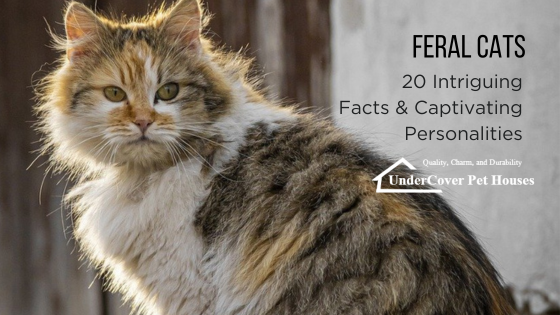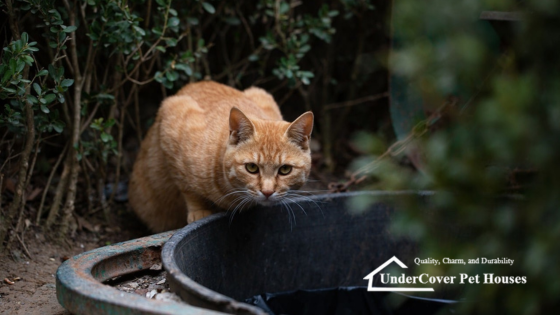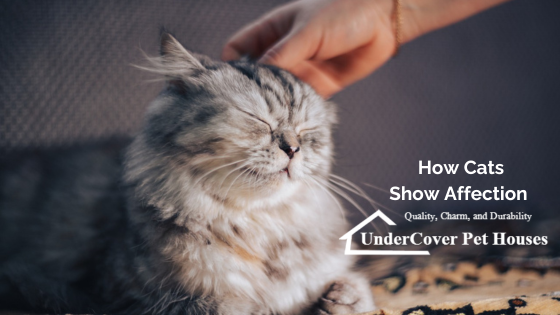 Loading... Please wait...
Loading... Please wait...Blog - Outdoor cats
Paws in the Park: Community Events for Feral Cat Awareness
Posted by Danny MacDonald on 2024 Mar 24th

Feral cats often roam the streets of our neighborhoods, silently routing through alleys and parks and surviving against the odds. Hosting community events focused on feral cat awareness can be a powerful way to shed light on their plight and rally support for their welfare.
One such event that has gained momentum in the last few years is "Paws in the Park."
What is Paws in the Park?
Paws in the Park is an event-based movement in the USA and Canada. It's an annual pet festival dedicated to celebrating pets and raising awareness about their lives, challenges, and the importance of humane treatment. The festival is also dedicated to fundraising in support of efforts to rescue and care for thousands of dogs and cats, including feral cats, each year.
It brings animal lovers, advocates, and communities together to support these often-forgotten felines.
Paws in the Park: Activities
Paws in the Park comprises various activities to engage attendees of all ages and backgrounds. From informative workshops and informational booths to fun-filled games and contests, there's something for all animal lovers to enjoy.
Some highlights include:
- Educational Workshops: Experts in animal-led workshops on pet behavior, Trap-Neuter-Return (TNR) programs, and community cat colony care.
- Adoption prospects: Local animal shelters and rescue organizations showcase adoptable cats, including friendly feral cats that can be rehomed.
- Vendor booths: Vendors offer pet services, products, and educational materials, and their earnings often go towards feral cat rescue and advocacy efforts.
- Kids' Corner: Children can participate in interactive activities like face painting, colouring contests, and storytelling sessions centred around responsible pet care.
- Community tours: Guided tours provide insight into local feral cat colonies, highlighting how community members can support and care for these cats.
- Fundraising events: Raffles, auctions, and donation drives raise funds for feral cat spaying/neutering, medical care, and habitat enhancement projects.
Paws in the Park: The Impact
The impact of Paws in the Park festivals extends far beyond the day itself. By raising awareness and fostering community involvement, these events contribute to tangible improvements in pet and feral cat welfare. They encourage people to get involved through feral cat volunteering, fostering, advocating for policy change, or simply becoming more responsible pet owners.
Community Events for Feral Cat Awareness
Feral cats face many issues, from lack of food and shelter to health challenges and negative community perceptions. Community events like Paws in the Park offer an opportunity to teach people about these challenges and inspire action.
By bringing the community together, such events can foster compassion, promote responsible pet ownership, and advocate for humane solutions to feral cat populations.
Getting Involved
You can start by hosting a Paws in the Park event in your community. Contact local animal shelters, rescue groups, and community organizations for support. Collaborate with volunteers, sponsors, and vendors to organize pet and feral cat support activities while raising awareness. Reach out to the community by spreading the word through local news outlets, social media, and community bulletin boards.
Bottom Line
Paws in the Park exemplifies the power of community-driven initiatives to promote feral cat awareness and welfare. By hosting events that inform, inspire, and engage, we can make a difference, create a brighter future for deserving animals, including feral cats, and build more compassionate communities.
Decoding How Cats Use Their Whiskers
Cats possess a sophisticated language beyond mere meows, purrs, and body language–their remarkable whiskers. These specialized hairs, far from mere decorations, play a crucial role in feline communication. Cat versatile and super-sensitive whiskers are positioned on their face, above their eyes, lower jaw, and even on the back of their front legs. For cats, whiskers serve as a sixth sense, [...]

Catnip Magic: The Real Reason Why Cats Love Catnip
Catnip is a leafy herb that’s a member of the mint family. It’s green with triangular leaves and small white or purple flowers and is fascinating because of its effect on cats.Many cats show solid and positive reactions to the catnip plant, indicating they find it enjoyable and highly stimulating.According to research studies, catnip can make many of our furry friends [...]

Feral Cats: 20 Intriguing Facts and Captivating Personalities (Part 2)
Beyond their soft fur, gentle head-butts, and playful behaviors, cats, both feral and domesticated, possess sophisticated behaviors and personalities.Here’s part two—where we dive into the fascinating world of cats to bring you the remaining 10 intriguing and captivating feral cat facts and personalities.11. Night ninjas Compared to humans, cats have incredible night vision.They possess a reflective layer behind their retinas which [...]

Feral Cats: 20 Intriguing Facts and Captivating Personalities (Part 1)
Cats are fascinating creatures with intriguing behavior and personalities. Whether they're feral or domesticated cats, these mysterious feline friends have some compelling facts to tell.Let's dive into 20 intriguing facts and personalities about feral cats:1. Communication tacticsFeral cats use a variety of methods to communicate with each other including body language and vocalization. For example, they’ll meow, hiss, growl, [...]

DIY: Crafting Fun Projects for Your Kitty
If you're a cat owner, you know that these furballs love to explore and play. As they do, they bring a lot of joy and laughter into our lives.To add extra fun to your feline friend's life, you can embark on some exciting DIY cat-tastic projects.In this blog post, we'll explore cat-friendly and creative crafts that will make your [...]
Feeding Feral Cats: Everything You Need to Know
Feral cats, also community cats, are a usual sight in urban and rural areas. These furry creatures are independent and have adapted to life outdoors.While they may seem self-reliant, feral cats need compassionate care from compassionate volunteers who can contribute to their welfare by providing them with food, water, and shelter.In this blog post, we will explore everything you need to [...]

Pawsitively Adorable: How Cats Show Affection to Their Beloved Humans
While some people believe that cats are aloof and distant, the truth is that cats have a unique and charming way of expressing affection, endearing themselves to their human companions.In this blog post, we'll explore the various heartwarming ways cats demonstrate their love and attachment to their humans, shedding light on the beautiful bond shared between felines and their [...]
Feral Cats Matter: Their Surprising Role in Urban Biodiversity
Often feral cats are seen as a challenge in urban landscapes. While their presence may seem odd, feral cats influence urban ecosystems.As such, it’s essential to recognize the significance and the roles feral cat’s play. Here are some reasons why feral cats and their unique contributions to biodiversity are imperative.Feral Cats in Urban Areas Feral cats refer to cats that are [...]
Differences Between Feral, Stray, and Domesticated Cats
There are three main categories, domesticated, feral, and stray cats, which can be confusing. The reason is that each of these terms refers to different cat types with unique lifestyles and characteristics.Understanding their differences is crucial, as it can help us better interact and care for these feline companions.This blog post will look at the [...]
